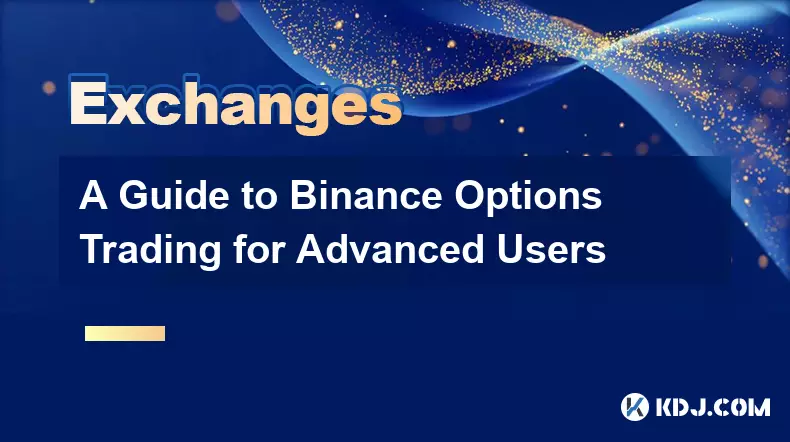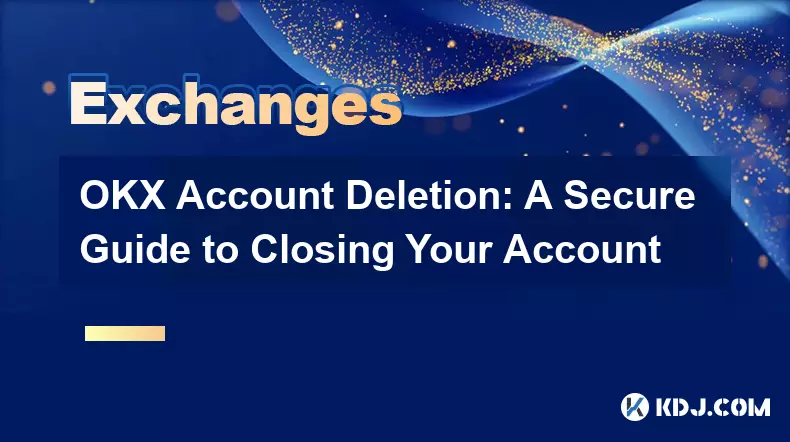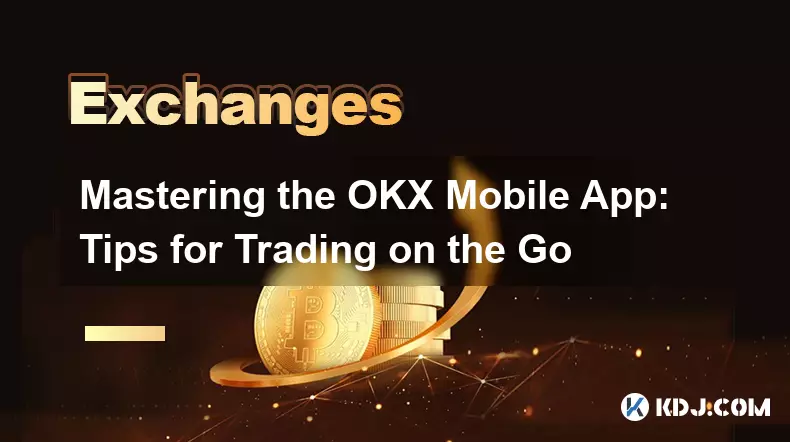-
 bitcoin
bitcoin $101752.865364 USD
-1.09% -
 ethereum
ethereum $3382.985899 USD
-1.38% -
 tether
tether $0.999658 USD
0.04% -
 xrp
xrp $2.272505 USD
-1.51% -
 bnb
bnb $989.089004 USD
0.14% -
 solana
solana $156.962612 USD
-3.08% -
 usd-coin
usd-coin $0.999776 USD
0.01% -
 tron
tron $0.290786 USD
-0.69% -
 dogecoin
dogecoin $0.174594 USD
-2.86% -
 cardano
cardano $0.560085 USD
-3.55% -
 hyperliquid
hyperliquid $40.023704 USD
-5.75% -
 chainlink
chainlink $15.324649 USD
-2.78% -
 bitcoin-cash
bitcoin-cash $493.576540 USD
-3.52% -
 zcash
zcash $571.320038 USD
-12.05% -
 stellar
stellar $0.280066 USD
-4.26%
A Guide to Binance Options Trading for Advanced Users
Binance Options allow traders to hedge or speculate on crypto prices using calls, puts, and advanced strategies like straddles and iron condors, with European-style expiration and USDT settlement.
Nov 01, 2025 at 04:36 pm

Understanding Binance Options Mechanics
1. Binance Options are derivative contracts that give traders the right, but not the obligation, to buy or sell an underlying asset at a predetermined price before or on a specified expiration date. These options are primarily based on major cryptocurrencies such as BTC and ETH.
2. Call options increase in value when the price of the underlying asset rises, while put options gain value when the price declines. Advanced traders use these instruments not only for speculation but also for hedging existing crypto positions.
3. Each option contract on Binance represents a fixed amount of the base cryptocurrency—typically 0.1 BTC per contract. This standardization simplifies position sizing and risk calculation across trades.
4. Options are priced using variables like strike price, time to expiration, volatility, and the current market price. The premium—the cost to enter the contract—is influenced heavily by implied volatility, which often spikes during periods of market uncertainty.
5. Binance uses a European-style exercise model, meaning options can only be exercised at expiration, not before. This affects strategy design, especially for early-exit tactics used in American-style markets.
Advanced Strategies for Maximizing Returns
1. The iron condor is a popular neutral strategy combining two credit spreads: a bear call spread and a bull put spread. It profits from low volatility and time decay when the underlying asset remains within a defined range.
2. Calendar spreads involve buying a longer-dated option while selling a shorter-dated one with the same strike price. This strategy capitalizes on differences in time decay rates and is effective when expecting short-term stagnation followed by movement.
3. Ratio spreads allow advanced users to take leveraged views without paying large premiums. For example, selling two out-of-the-money calls while buying one at-the-money call creates a delta-neutral position that benefits from sideways or slightly bullish movement.
4. Straddles and strangles are volatility-based plays. A straddle (buying at-the-money call and put) profits from sharp moves in either direction, while a strangle uses out-of-the-money options to reduce entry cost, requiring larger price swings for profitability.
5. Delta hedging involves adjusting spot or futures positions to offset the directional exposure of options portfolios. Traders frequently rebalance their hedges based on changes in delta, especially as expiration approaches.
Risk Management and Liquidity Considerations
1. High leverage in options amplifies both gains and losses. Even small movements against a position can trigger significant drawdowns, particularly in short premium strategies like naked puts or calls.
2. Liquidity varies significantly across strike prices and expiration dates. Near-the-money options with weekly expiries tend to have tighter bid-ask spreads, while far-out strikes may suffer from slippage and poor fill rates.
3. Gamma risk becomes critical close to expiration, especially for short option positions. Rapid price movements can cause delta to swing dramatically, leading to outsized losses if not actively managed.
4. Position sizing should account for worst-case scenarios, not just expected outcomes. Using stress tests and scenario analysis helps prevent margin calls and liquidations during volatile events like macroeconomic announcements or exchange outages.
5. Binance’s margin system for options requires maintaining adequate collateral. Unrealized losses in one leg of a spread can impact the overall margin balance, potentially triggering automatic liquidation if thresholds are breached.
Frequently Asked Questions
How does implied volatility affect Binance options pricing?Implied volatility reflects market expectations of future price fluctuations. Higher IV increases option premiums, benefiting sellers who collect more credit. Buyers face higher costs but gain more leverage if volatility materializes. Traders monitor IV rank to determine whether options are relatively cheap or expensive.
Can I roll my Binance options positions?Yes, rolling is permitted by closing an existing position and opening a new one with a later expiry or different strike. This technique extends duration, adjusts risk exposure, or captures additional premium. Ensure sufficient margin is available before initiating the roll.
What happens if my option expires in-the-money?If a call or put expires in-the-money, it will be automatically exercised. The settlement is cash-based in USDT, and the profit or loss is credited to your wallet. Out-of-the-money options expire worthless, resulting in total loss of the premium paid.
Are there fees associated with Binance Options trading?Binance charges a taker fee for market orders and a lower maker fee for limit orders. Fees vary based on 30-day trading volume and VIP level. Additional costs include funding implications from holding positions and potential spread losses in illiquid contracts.
Disclaimer:info@kdj.com
The information provided is not trading advice. kdj.com does not assume any responsibility for any investments made based on the information provided in this article. Cryptocurrencies are highly volatile and it is highly recommended that you invest with caution after thorough research!
If you believe that the content used on this website infringes your copyright, please contact us immediately (info@kdj.com) and we will delete it promptly.
- Ripple (XRP) in 2026: Hold or Fold? A Look at XRP's Future and Emerging DeFi Alternatives
- 2025-11-08 18:35:01
- Zcash ZEC Coin Price Explosion: From Privacy Niche to Center Stage
- 2025-11-08 18:55:01
- Berachain Price Prediction: Navigating the Honeycomb Hype in Crypto
- 2025-11-08 18:55:01
- Arthur Hayes, Gold, and Bitcoin: A Modern Monetary Trinity?
- 2025-11-08 19:15:01
- Shiba Inu's Next Move: Navigating a Shifting Market
- 2025-11-08 19:20:01
- Pakistan's Crypto Crossroads: Balancing Opportunity with Asset-Backed Realities
- 2025-11-08 19:20:01
Related knowledge

Common Mistakes to Avoid on OKX: A Guide for New Traders
Nov 04,2025 at 03:37pm
Understanding the Interface Before Trading1. New traders often jump into placing orders without fully exploring the OKX platform layout. Taking time t...

OKX TradingView Integration: A Guide to Advanced Chart Analysis
Nov 02,2025 at 03:37am
OKX and TradingView: Bridging the Gap for Professional Traders1. OKX, one of the leading cryptocurrency exchanges, has integrated with TradingView to ...

Finding Your OKX Deposit Address: A Quick and Safe Guide
Nov 05,2025 at 01:15pm
Finding Your OKX Deposit Address: A Step-by-Step Process1. Log into your OKX account using your registered credentials. Ensure you are accessing the o...

OKX Savings Guide: A Low-Risk Strategy for Earning Crypto
Nov 05,2025 at 06:55am
Understanding OKX Savings and Its Role in Crypto Earnings1. OKX Savings offers users a straightforward method to earn passive income by leveraging idl...

OKX Account Deletion: A Secure Guide to Closing Your Account
Nov 05,2025 at 08:44am
Understanding the Implications of Account Closure1. Closing your OKX account permanently removes access to all associated trading features, including ...

Mastering the OKX Mobile App: Tips for Trading on the Go
Nov 05,2025 at 01:19am
Streamlined Navigation for Efficient Trading1. The OKX mobile app features a clean and intuitive interface that allows traders to access key functions...

Common Mistakes to Avoid on OKX: A Guide for New Traders
Nov 04,2025 at 03:37pm
Understanding the Interface Before Trading1. New traders often jump into placing orders without fully exploring the OKX platform layout. Taking time t...

OKX TradingView Integration: A Guide to Advanced Chart Analysis
Nov 02,2025 at 03:37am
OKX and TradingView: Bridging the Gap for Professional Traders1. OKX, one of the leading cryptocurrency exchanges, has integrated with TradingView to ...

Finding Your OKX Deposit Address: A Quick and Safe Guide
Nov 05,2025 at 01:15pm
Finding Your OKX Deposit Address: A Step-by-Step Process1. Log into your OKX account using your registered credentials. Ensure you are accessing the o...

OKX Savings Guide: A Low-Risk Strategy for Earning Crypto
Nov 05,2025 at 06:55am
Understanding OKX Savings and Its Role in Crypto Earnings1. OKX Savings offers users a straightforward method to earn passive income by leveraging idl...

OKX Account Deletion: A Secure Guide to Closing Your Account
Nov 05,2025 at 08:44am
Understanding the Implications of Account Closure1. Closing your OKX account permanently removes access to all associated trading features, including ...

Mastering the OKX Mobile App: Tips for Trading on the Go
Nov 05,2025 at 01:19am
Streamlined Navigation for Efficient Trading1. The OKX mobile app features a clean and intuitive interface that allows traders to access key functions...
See all articles





















![The Graph Price Prediction [GRT Crypto Price News Today] The Graph Price Prediction [GRT Crypto Price News Today]](/uploads/2025/11/07/cryptocurrencies-news/videos/690d4df44fe69_image_500_375.webp)




















































